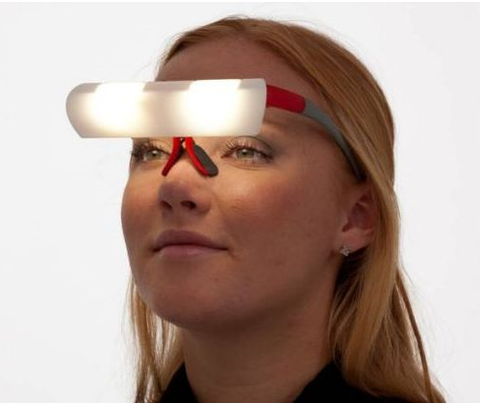Full Spectrum Natural Light Affects People’s Emotions
In the Swedish capital of Stockholm in winter, whenever the sun sets at 15:00 pm, the whole city sinks into the dark and gloomy.
More than half of people in this environment will become depressed and lethargic, and looks like a vibrant different person from summer. 3% of people even need to go to doctors. Before the 1980s, people know nothing about the causes of the personality change occurs with seasonal variations. Later, Dr. Norman E. Rosenthal, who worked at the U.S. National Institutes of Health Psychology as senior researcher, and clinical professor of psychiatry at Georgetown University, linked the short and dark winter’s day and the onset of seasonal depression. He and his colleagues began to study this phenomenon and defined it as Seasonal Affective Disorder (SAD).
No one knows the causes of SAD. Experts believe that the light is playing a certain role to SAD patients. With more light, you can sometimes improve their mood. Melatonin is also considered being associated with SAD. Melatonin is secreted at night, There would be more melatonin in human blood in winter than in summer, making human body temperature drops and becomes lethargic.
Scientists have confirmed that SAD patients’ symptoms usually are improved after light therapy, which may owing to the light blocked the generation of melatonin. Most SAD patients need to spend 2-3 days in the bright sunlight to eliminate abnormal symptoms. Also, you may find that when people travel closer to the equator, the symptoms become lighter.

Back in ancient Greece, Hippocrates period, when doctors had learned many aspects of the human body – both physical and psychological aspects, are resonating with colors in spectrum. They found that the color will affect human emotions, and even lead to many psychological disorders. In the book < COLOR ALCHEMY >, America’s chief color designer Jami Lin gave a detailed description of the psychological impact of color to human’s thoughts and feelings. And as preface for this book, Burton Jack now who has a PHD in The physical organic chemistry at Columbia University, had mentioned the incredible effects of light on human body and spirit, namely – Cure Effect. In a major test conducted by National Aeronautics and Space Administration (NASA), the researchers used colored LED light penetrate human tissue deeply to promote wound healing, accelerating the growth of human tissue structure, and eventually proved the color wavelengths can affect the chemical structure of the human body, stimulating natural growth in the healing process.
The best way to avoid SAD, is more exposure to full spectrum natural sunlight. If your mood is changing along with the sun in winter, you can seriously consider taking a vacation to a sunny place, it can dramatically better you healthy and mood throughout the winter. Dr. Norman Rosenthal said, when people receiving the ambient light of full spectrum, his body releases significantly reduced melatonin, by which the depression is eased, and the mood has been improved significantly. Compared to those receiving light with certain wavelength, are subject to SAD.

For those who live in the north as well as those who stay indoor all day, the sunshine is almost a luxury during the most of the time in year. However, general indoor lighting products have a serious lack of spectrum. For example, a primary school in Vermont’s tried to installed ultraviolet (UVB) fluorescent lamp in three classrooms. Before using this yet, the absenteeism caused by illness of children in experimental group and the comparison group are the same, but after replacing the fluorescent, the sickness rate of those kids who enjoyed the light with ultraviolet was reduced by 40% than the comparing group. Children have been relatively easy to get sick particularly in winter and spring. However, this situation could be changed by using lighting products with part of ultraviolet. That is to say, our immune system could be significantly affected by the length and quality of our daily light we exposure in.
If you cannot go to a warm sunny place, you can also think of ways to make yourself at home, receiving the maximum amount of sunlight. Or change the lamps in your home and office into a full-spectrum lighting product.
If the situation is really bad, you might consider phototherapy, although this has to be studied on the optimal irradiation therapy sessions, irradiation time and irradiation intensity. But for SAD people, two hours a day, from six to eight in the morning would be effective. Of course, some take longer sunshine hours, or increase the time of being illuminated at night. Light intensity should be 2500 lux, which is approximately equal to the received luminosity of standing at the window in spring.

Daylight glasses for SAD patient, developed by Denmark engineer
Of course, just like the author of < Healthy Pleasures > Robert Ornstein, Ph.D. & David S.Sobel, M.D. said, most time it is not the light affecting your mood, but your attitude towards yourself and look at the world.
